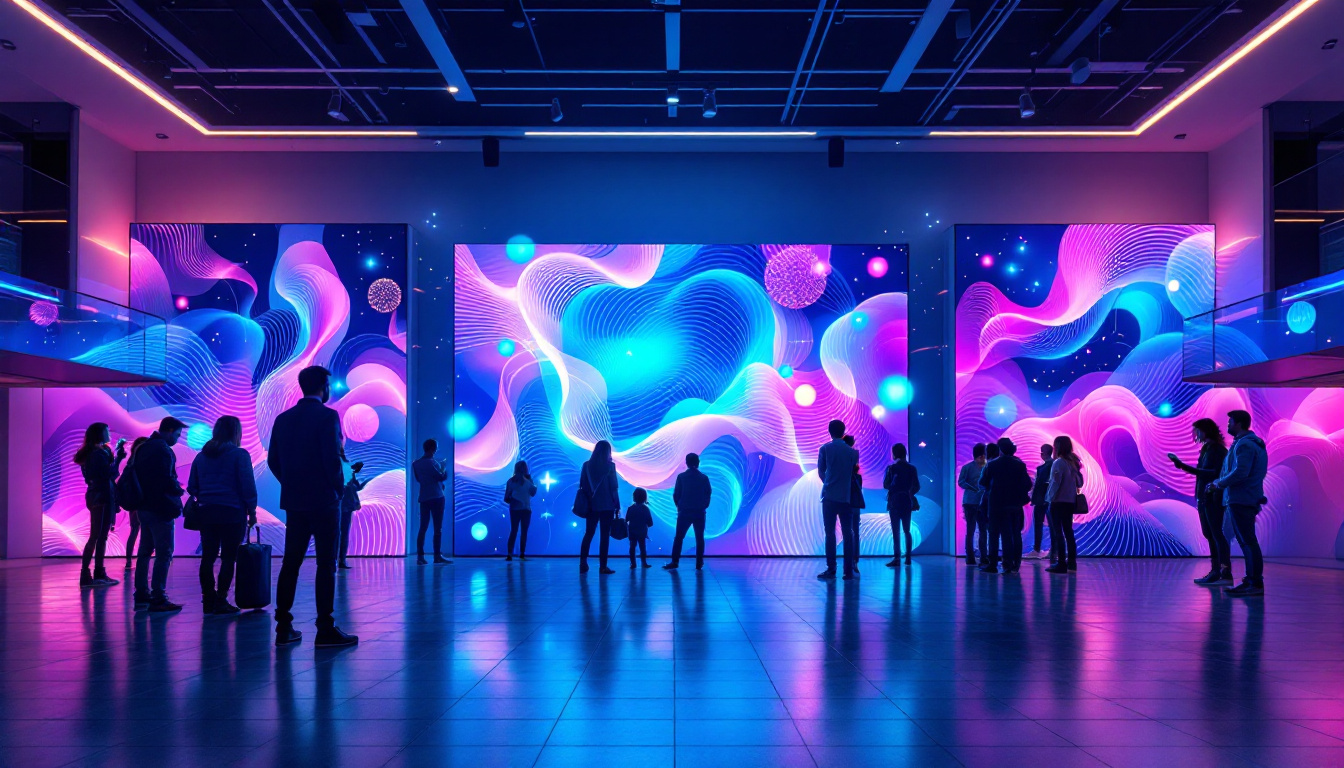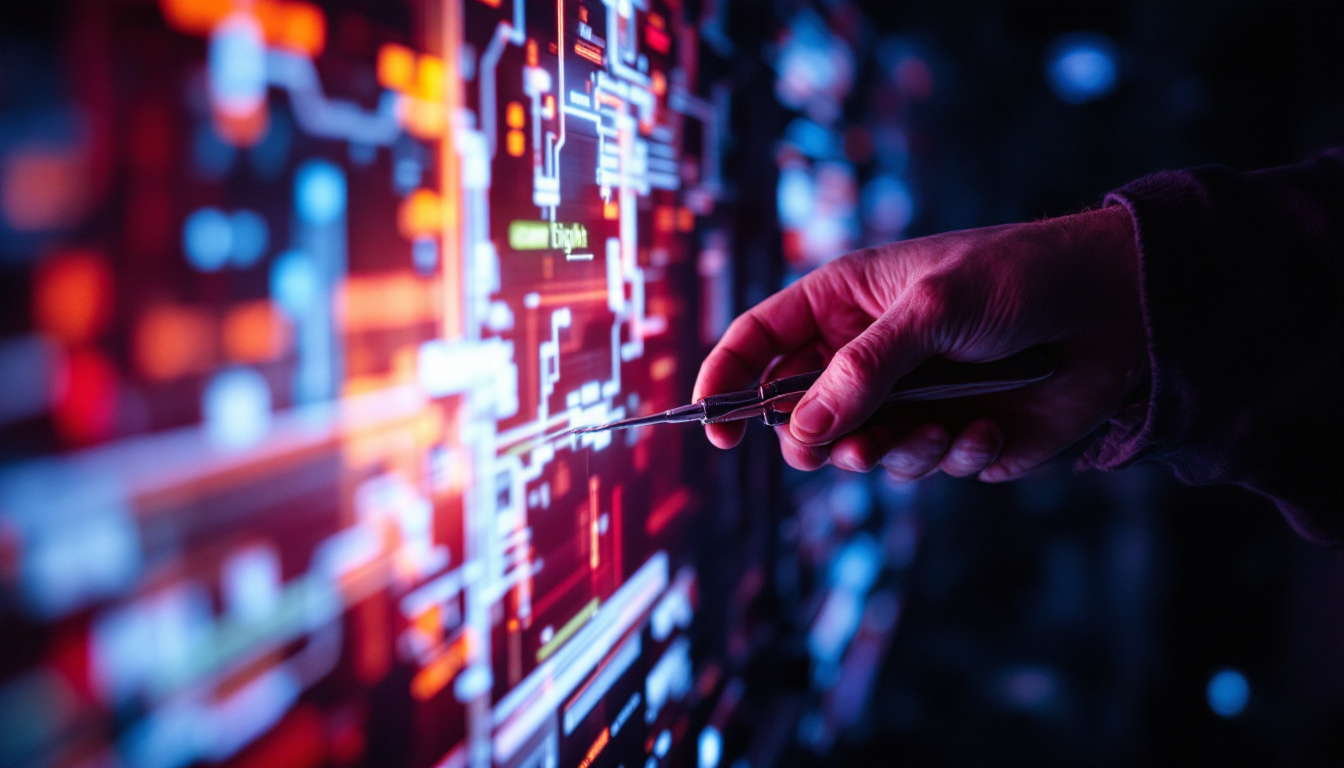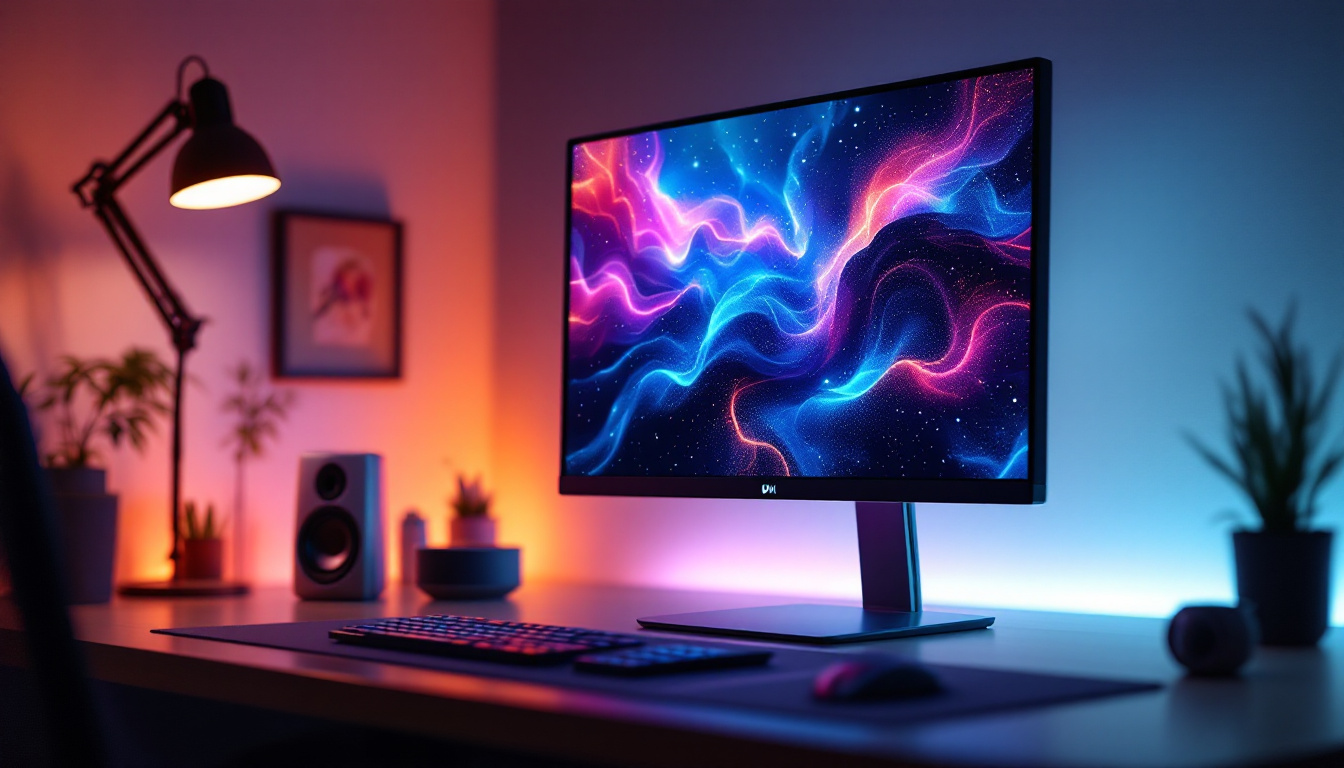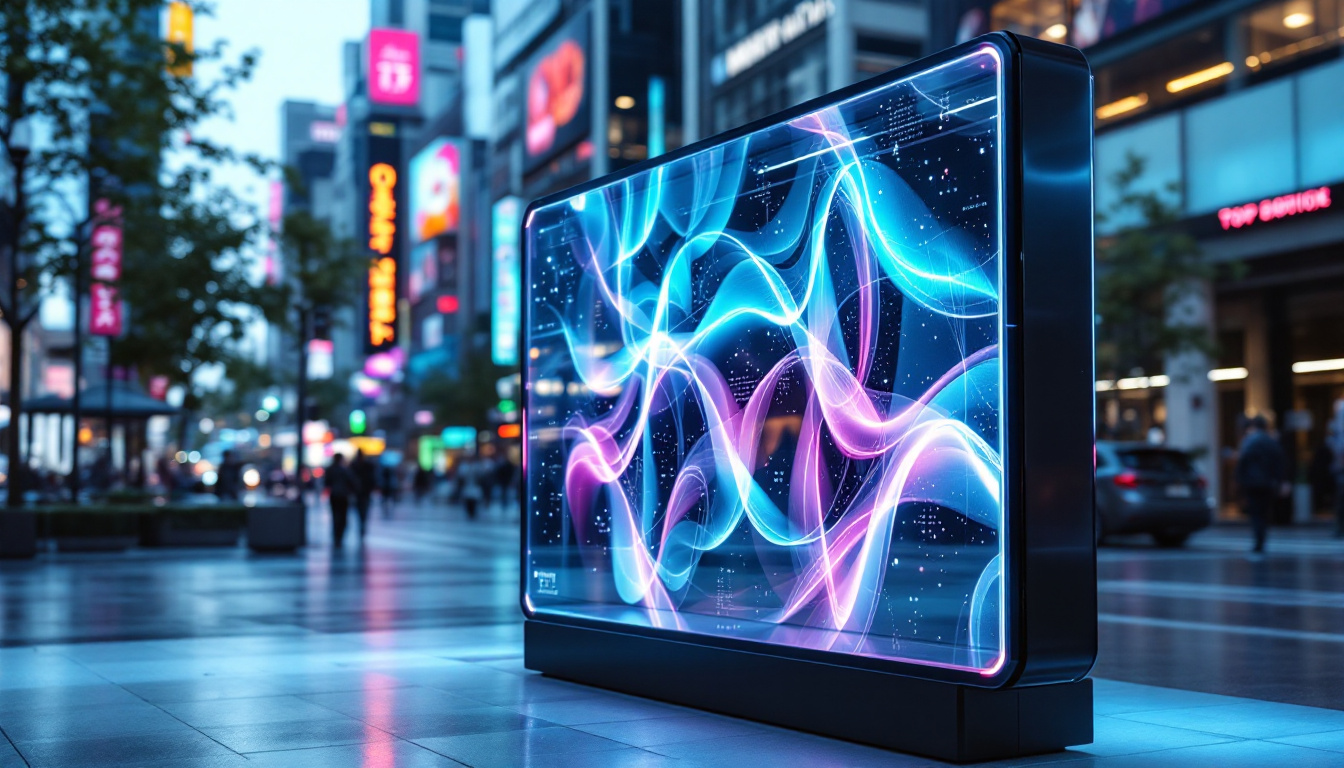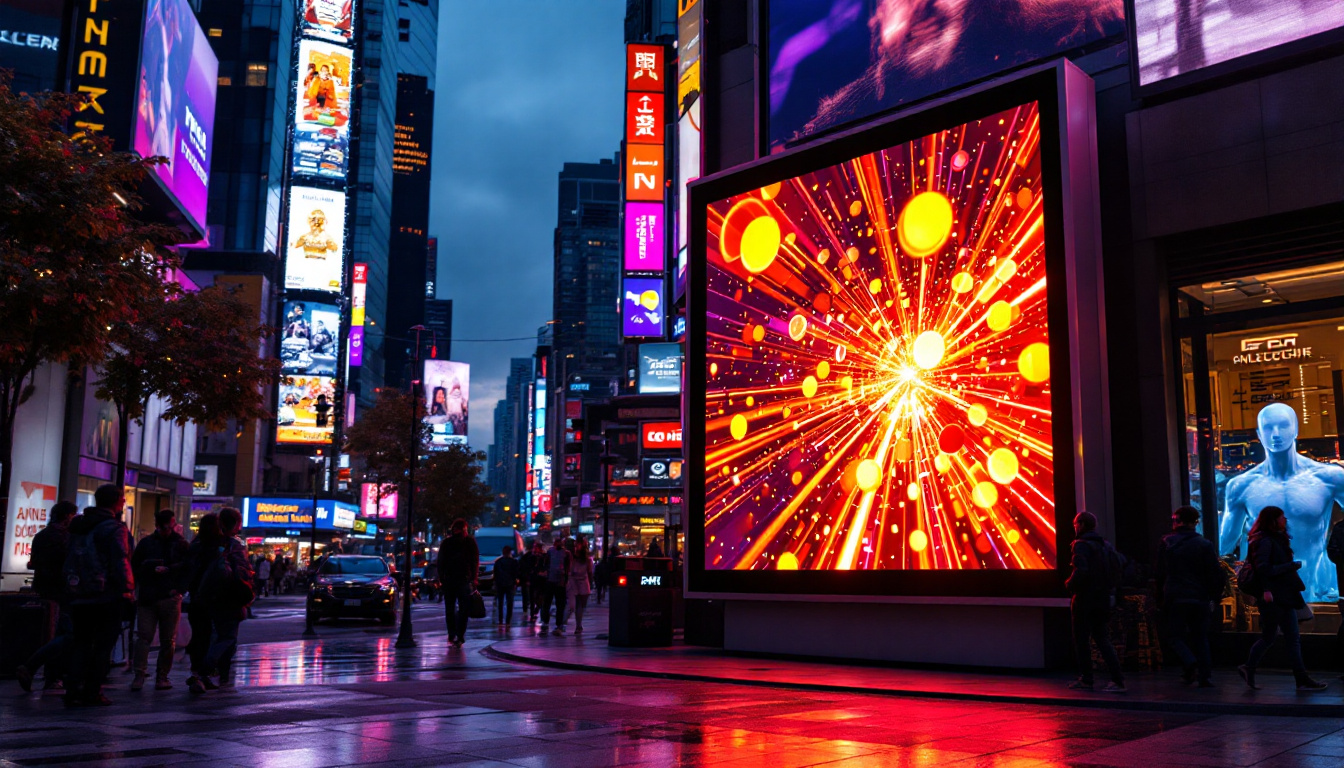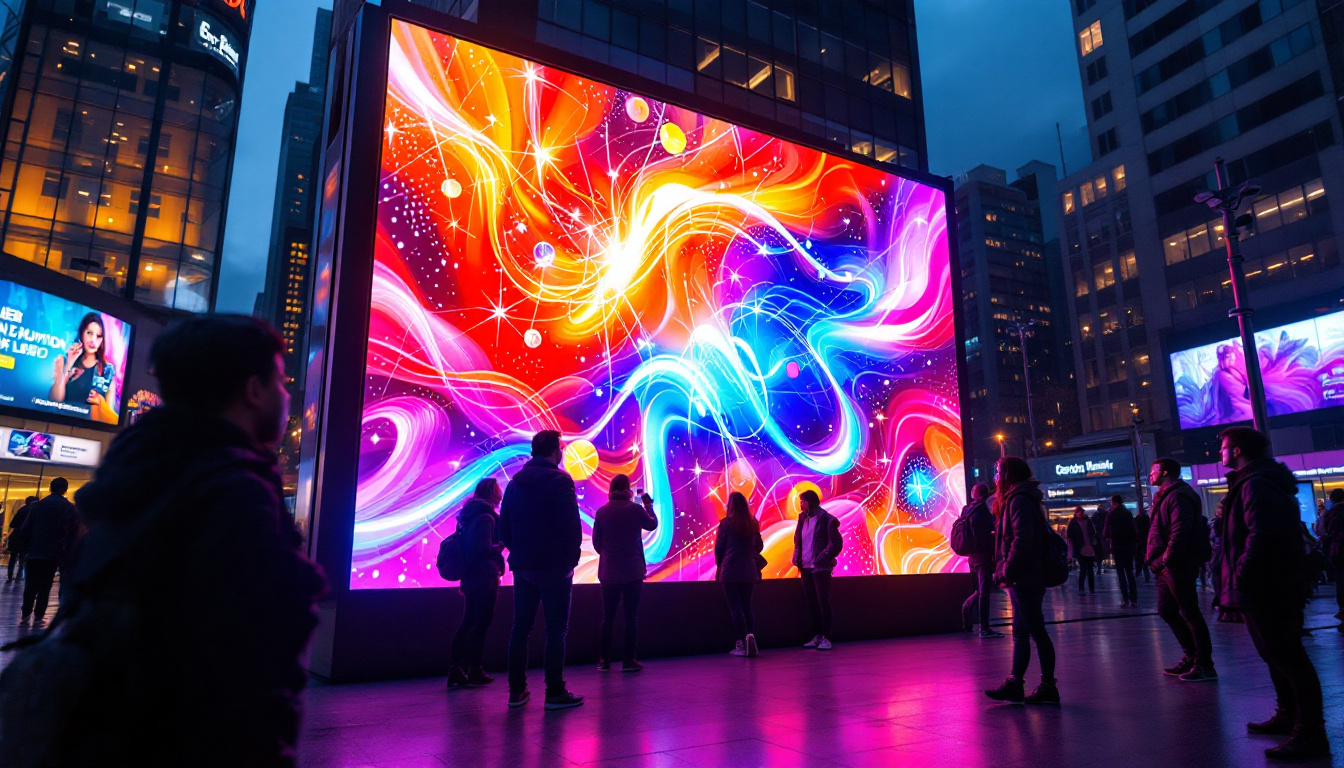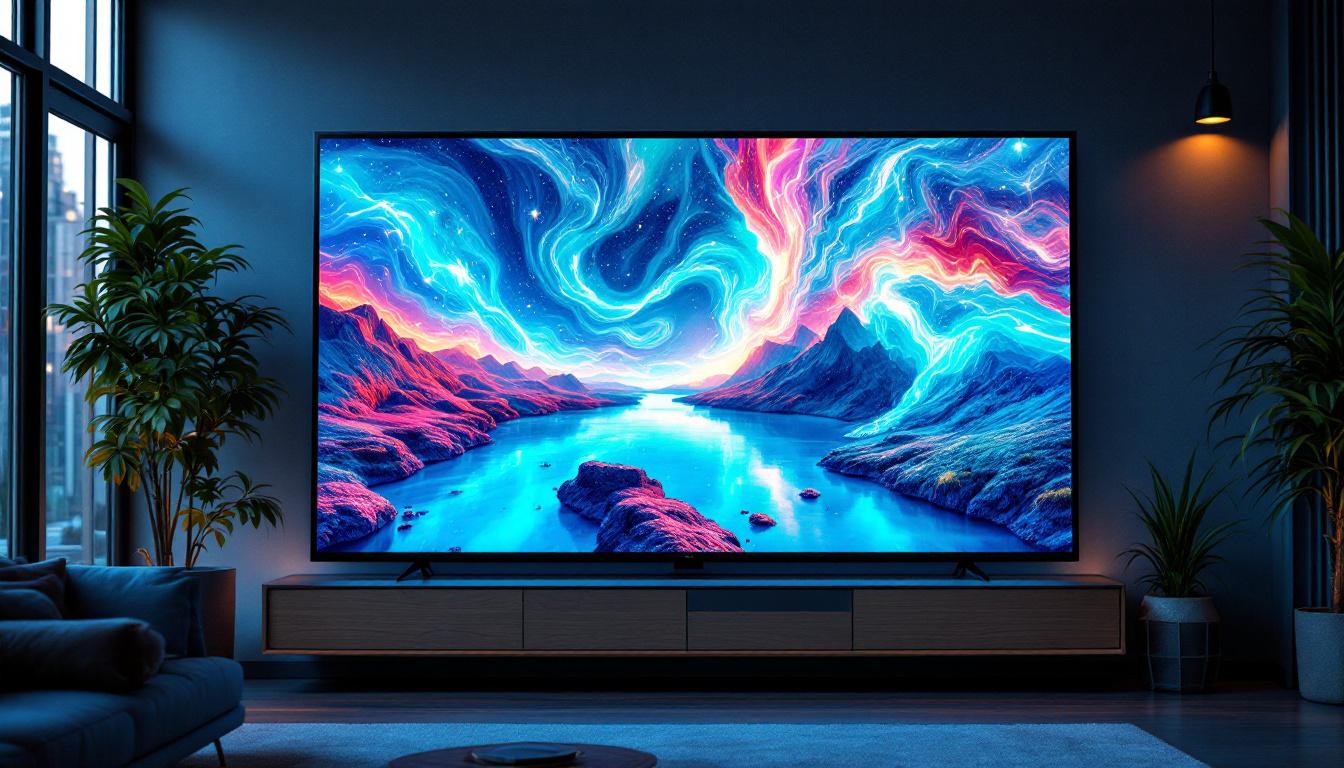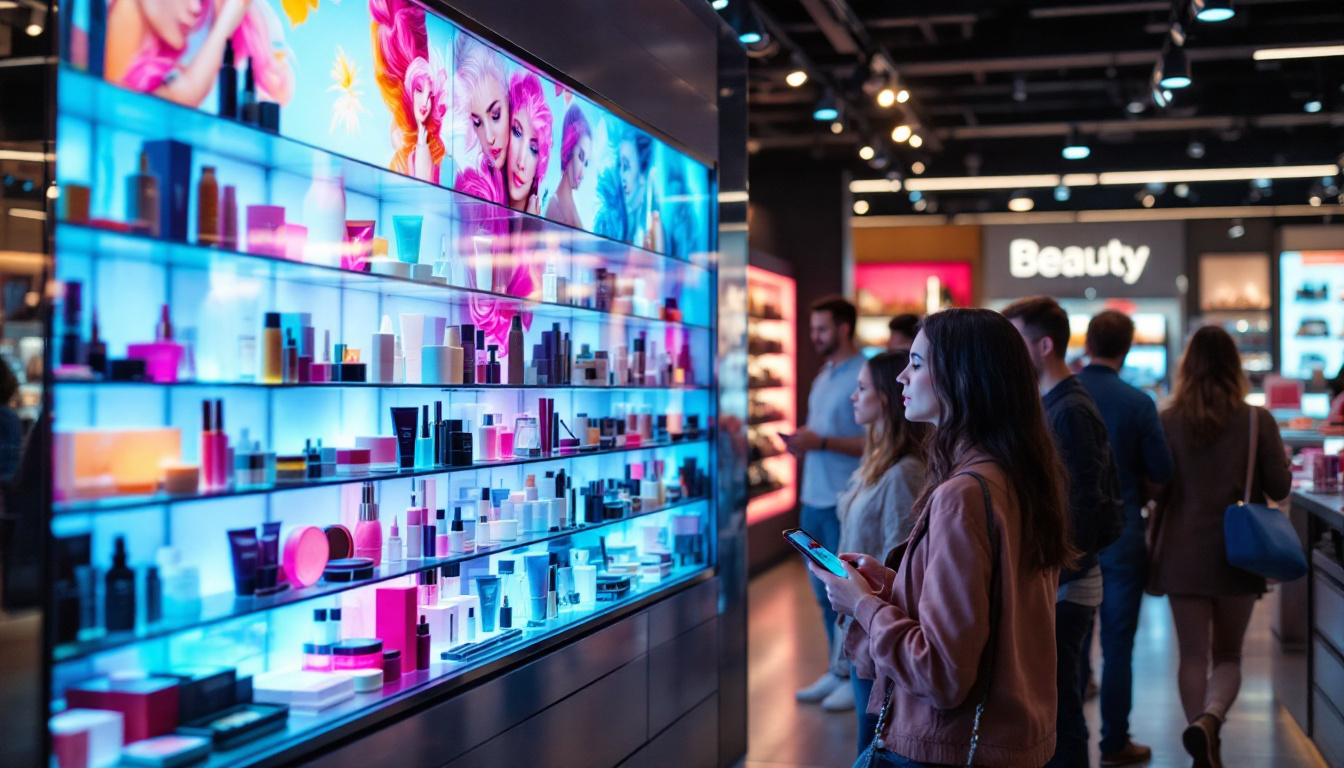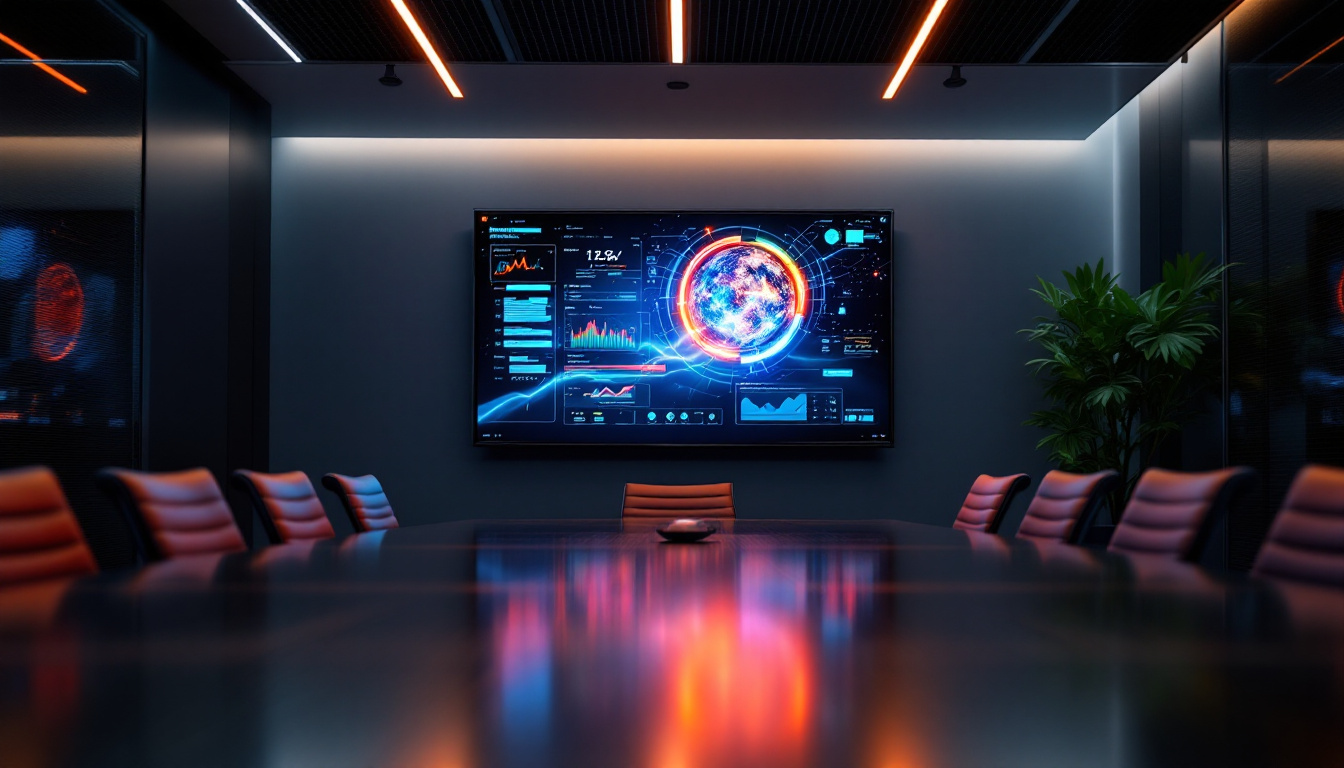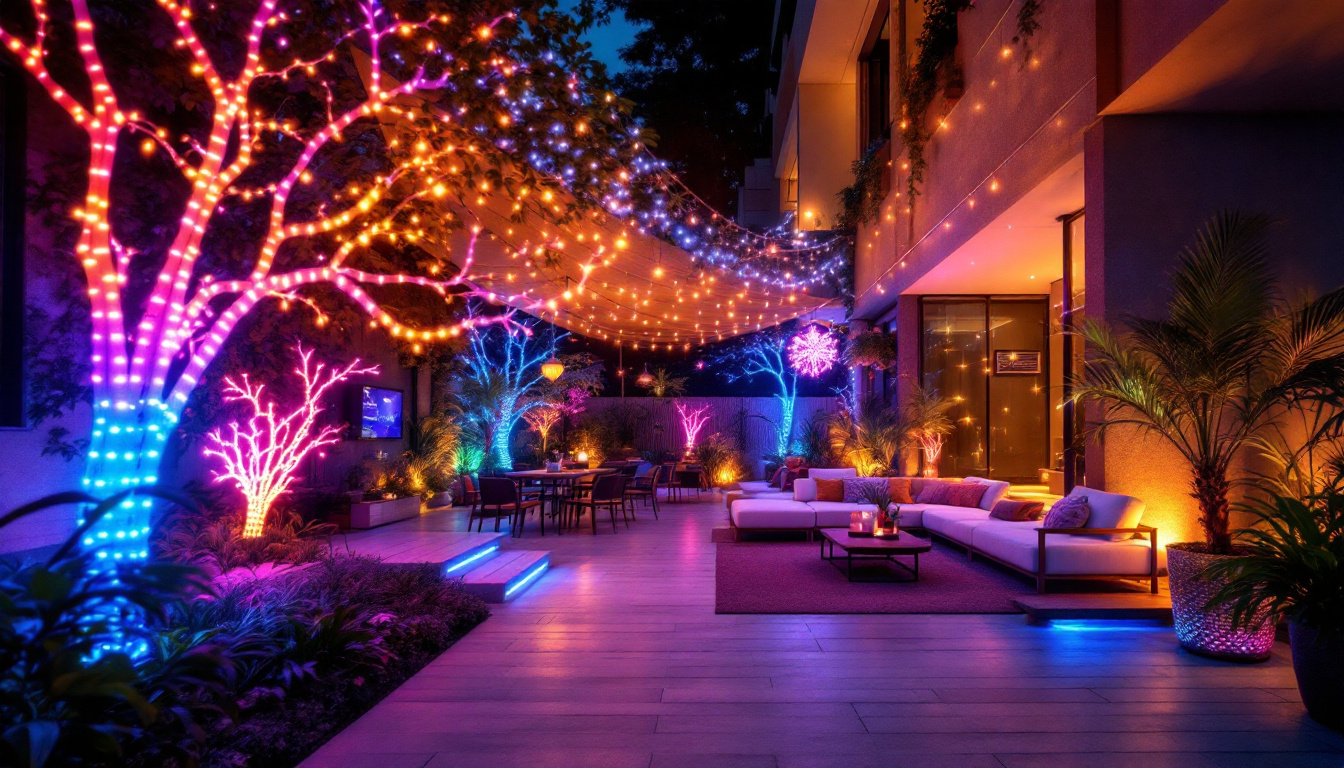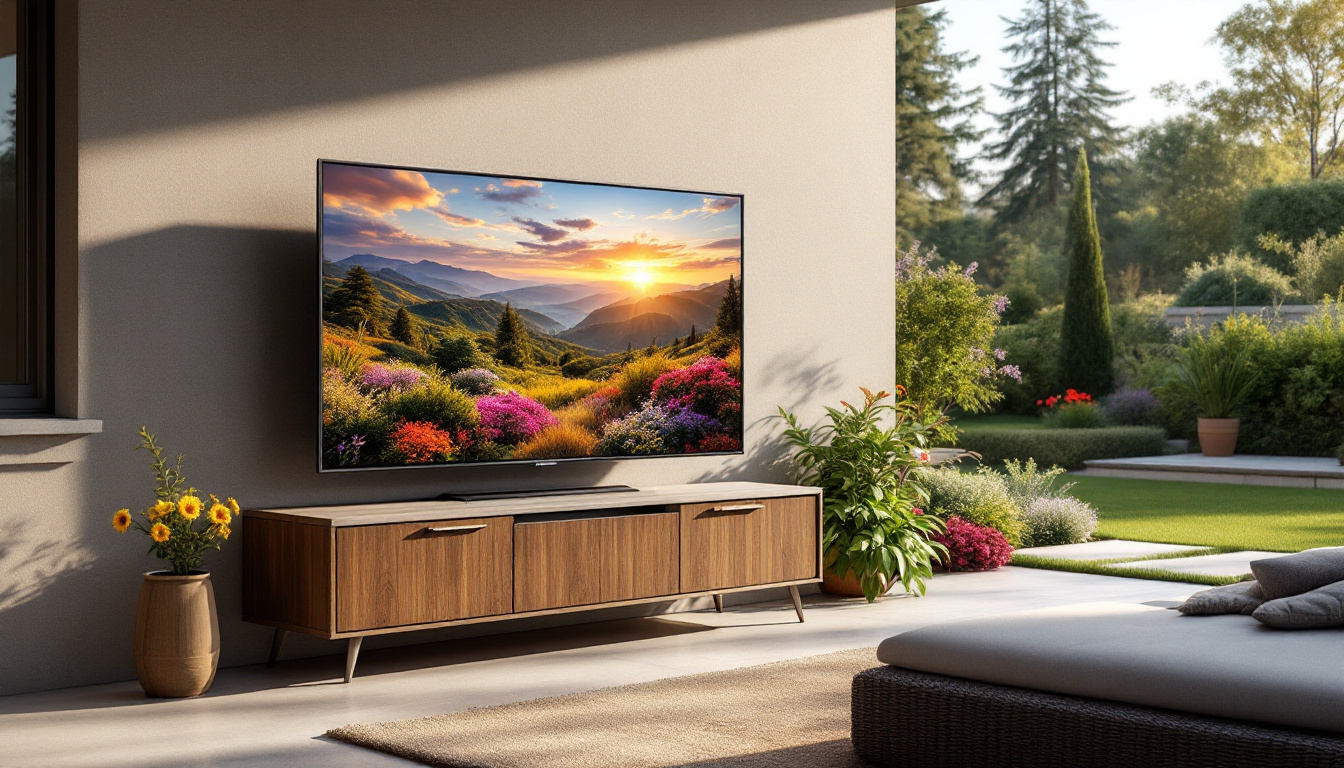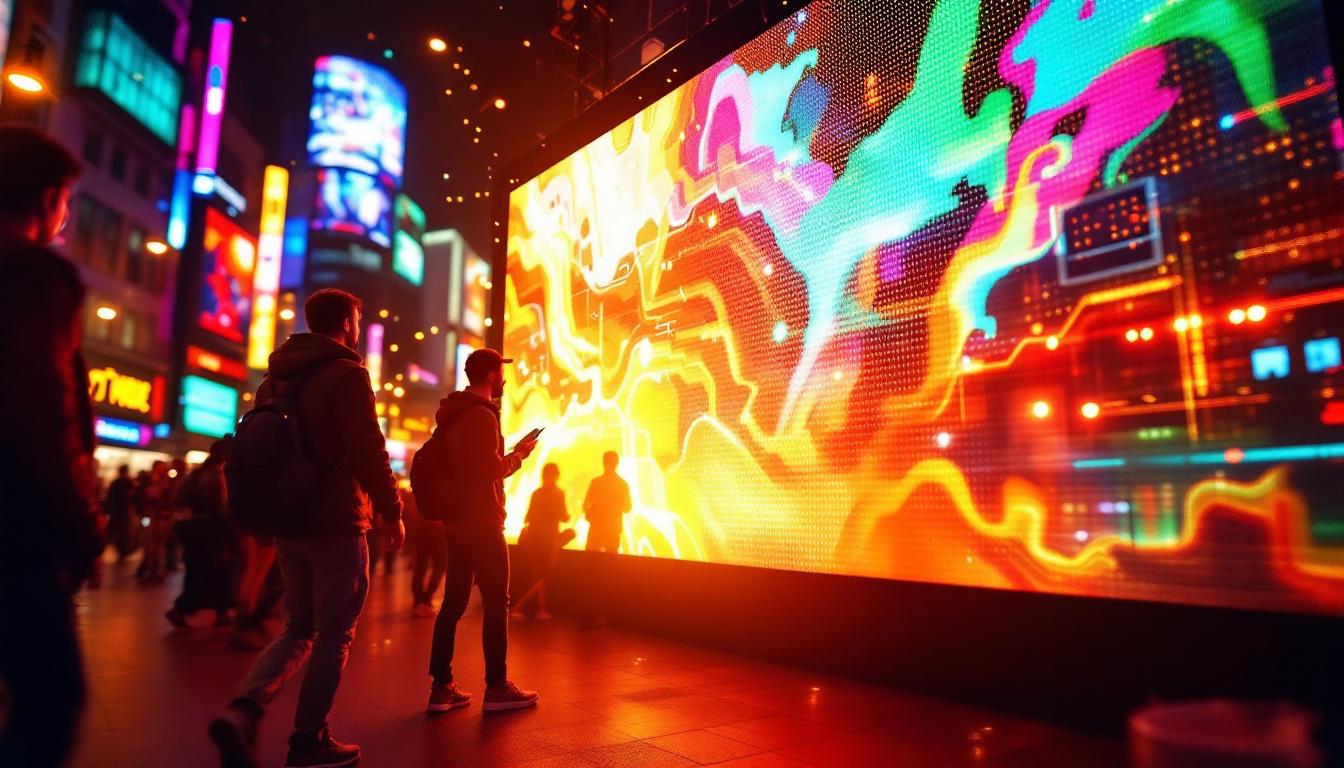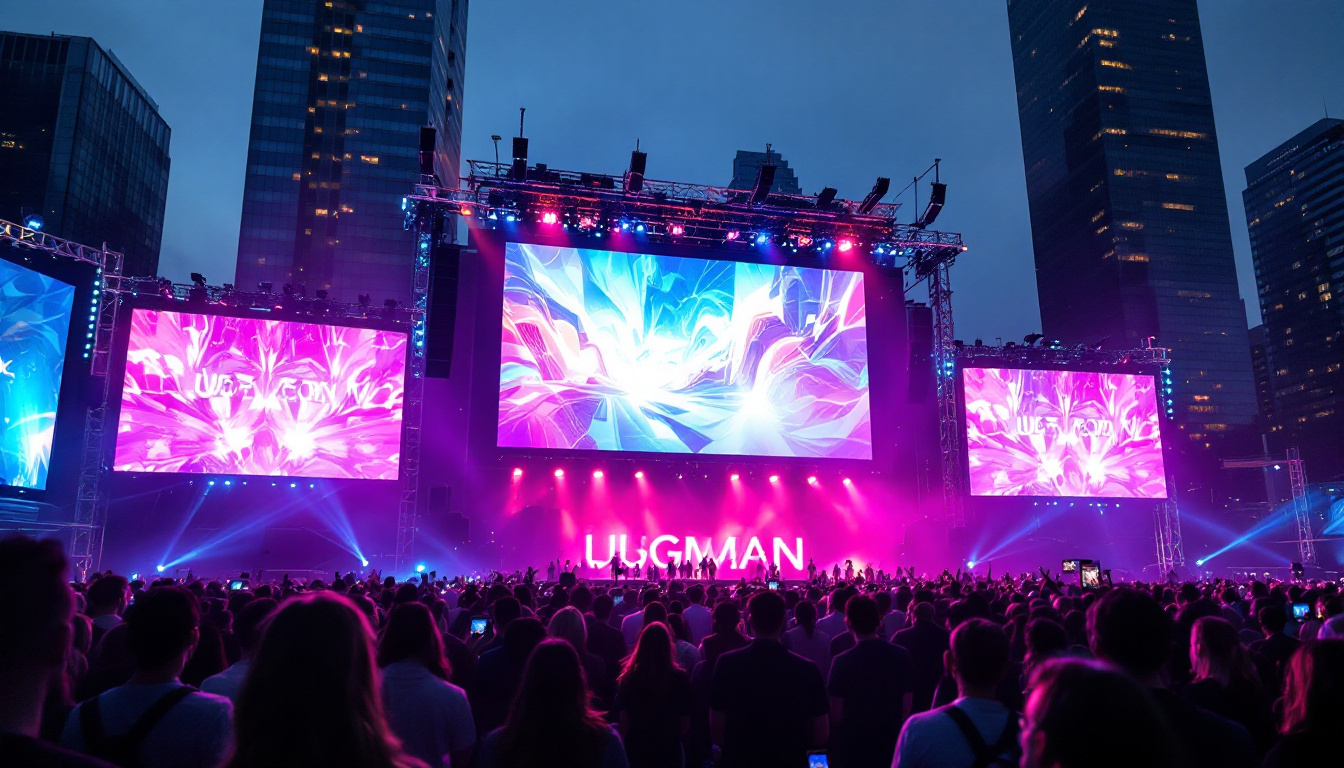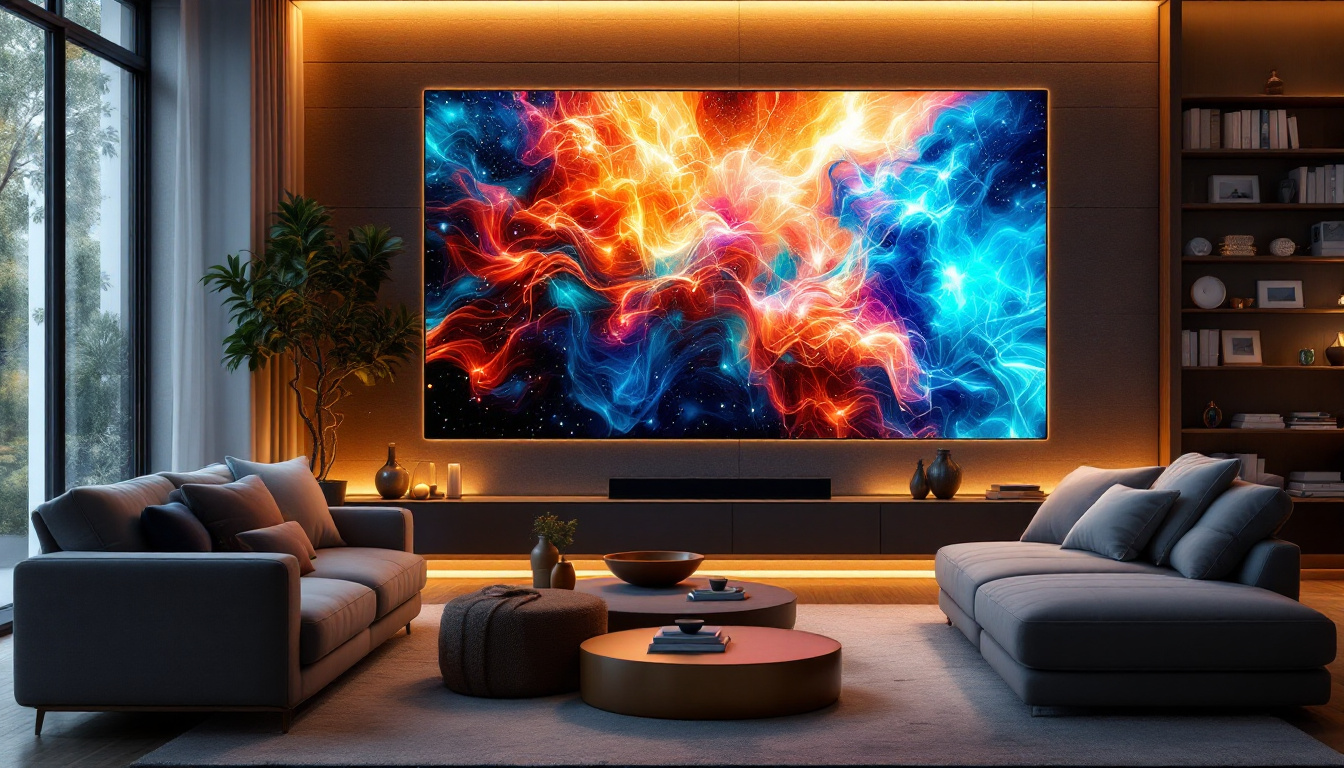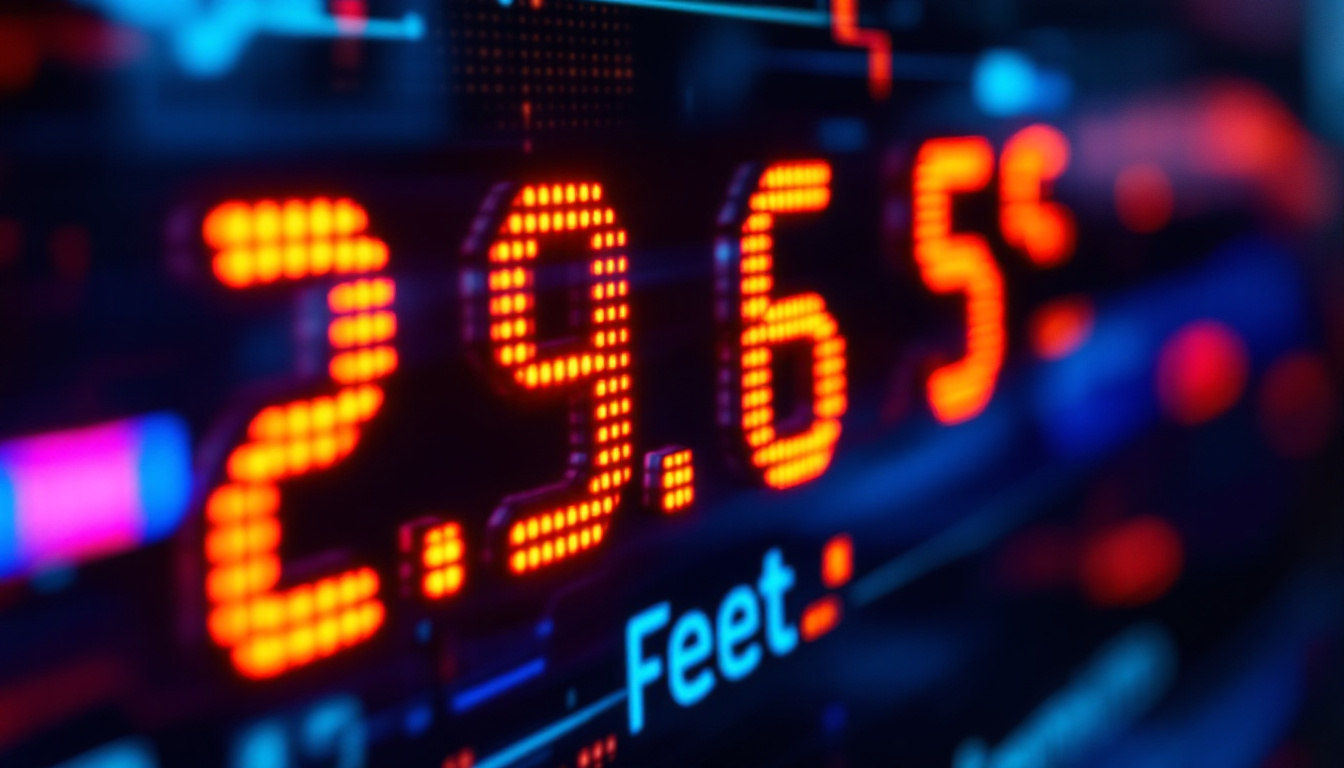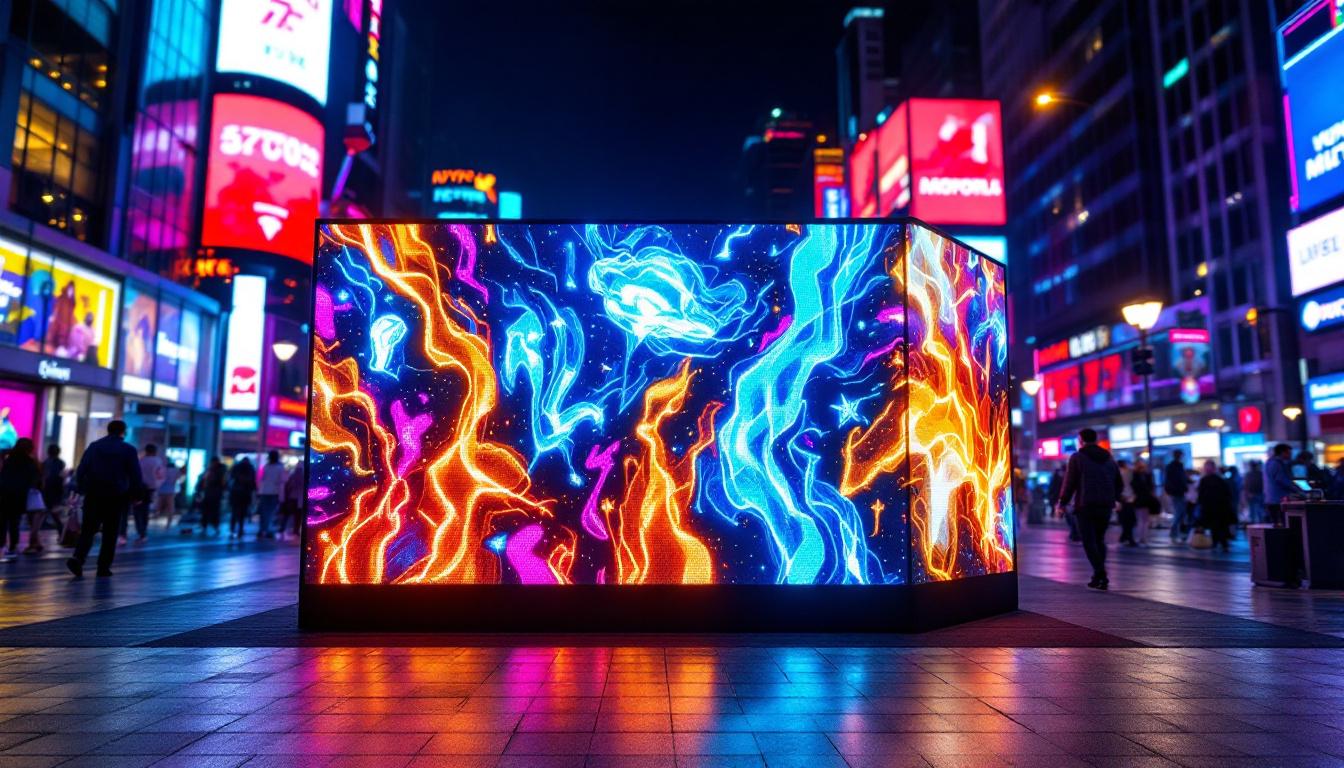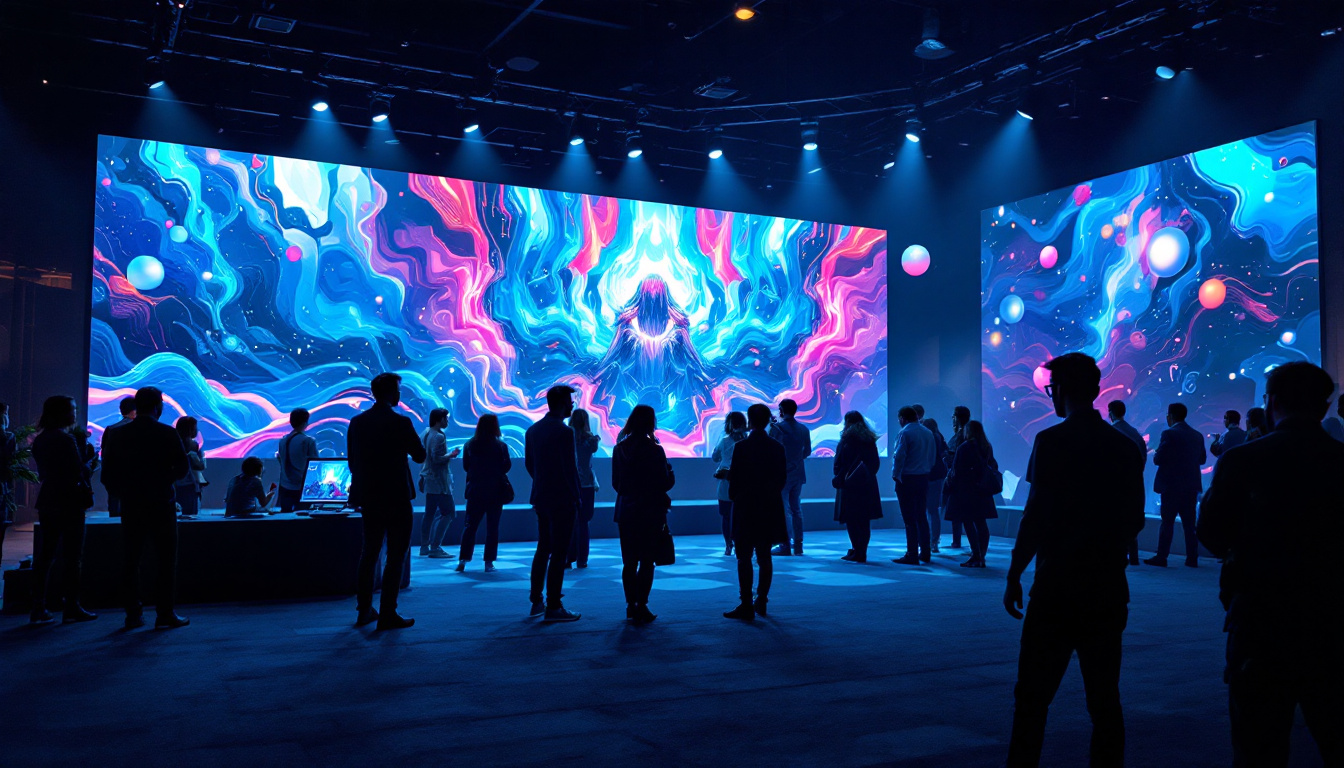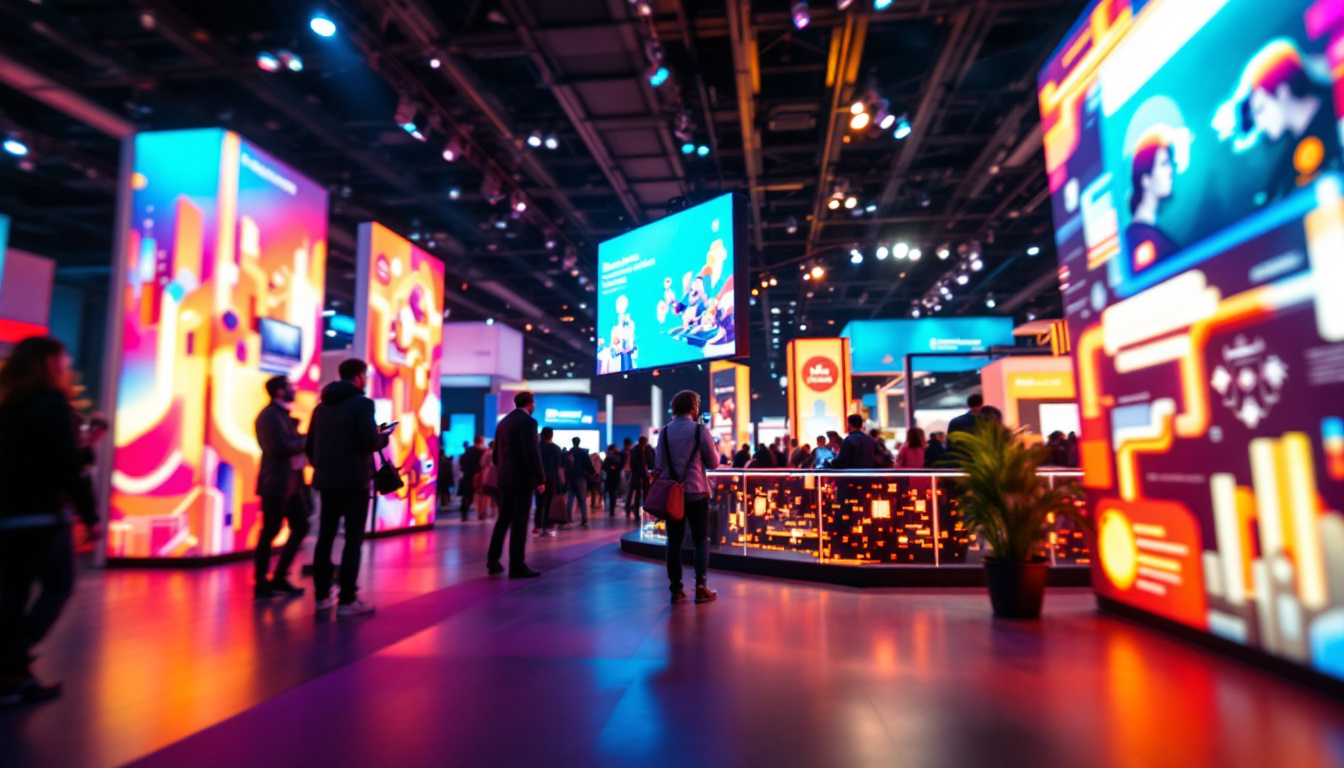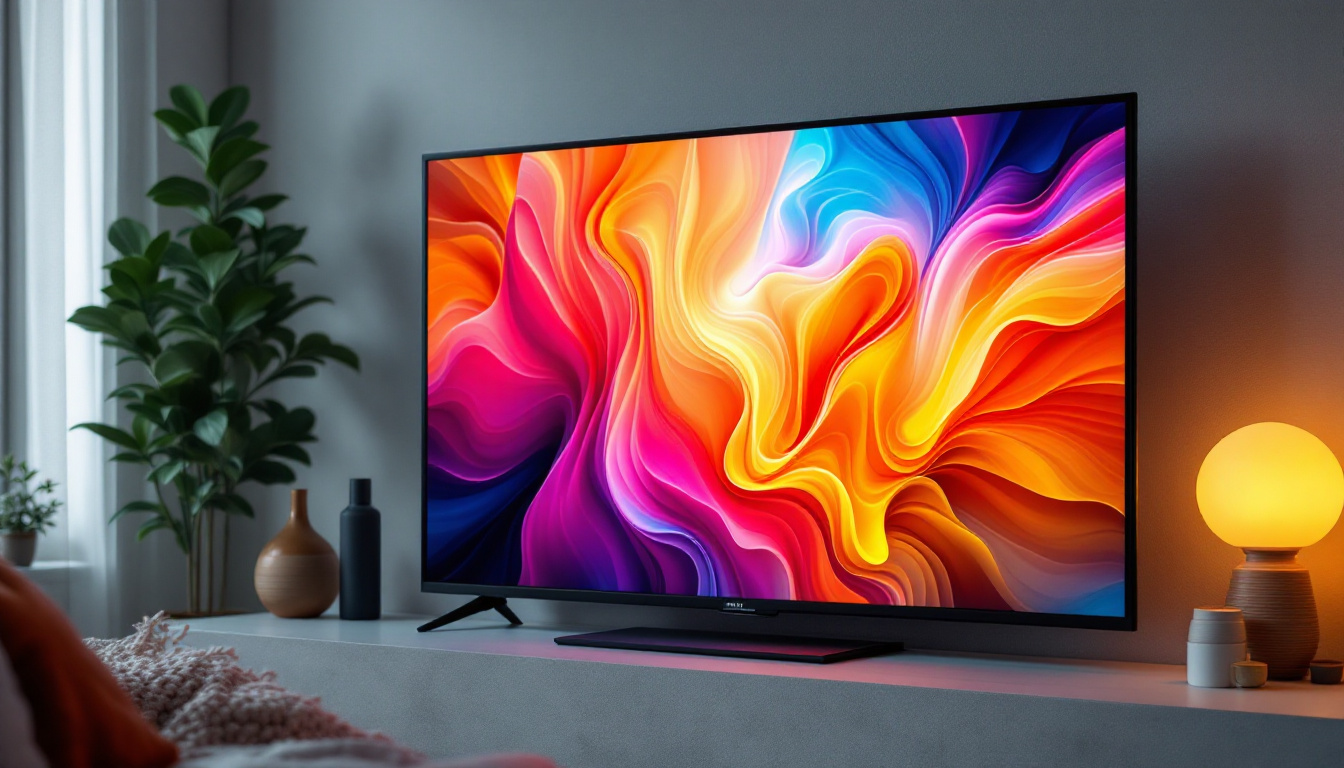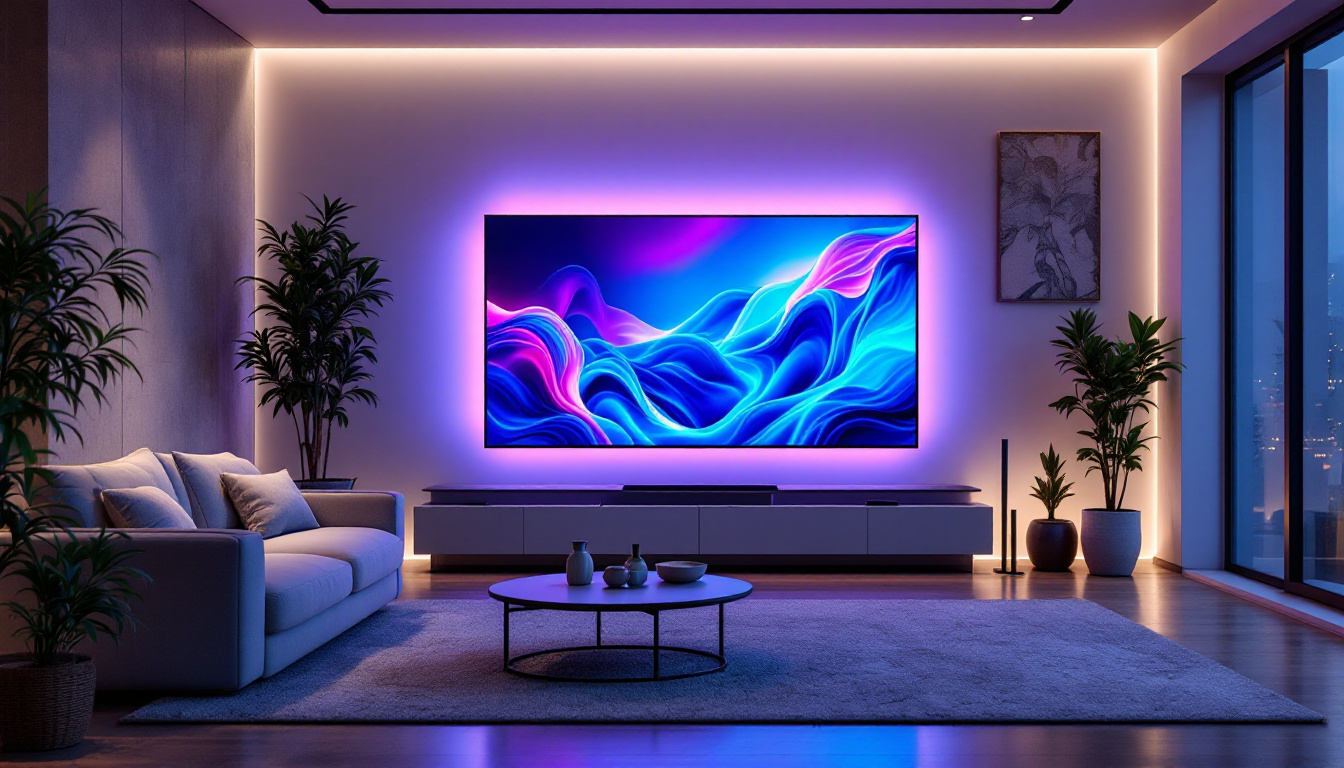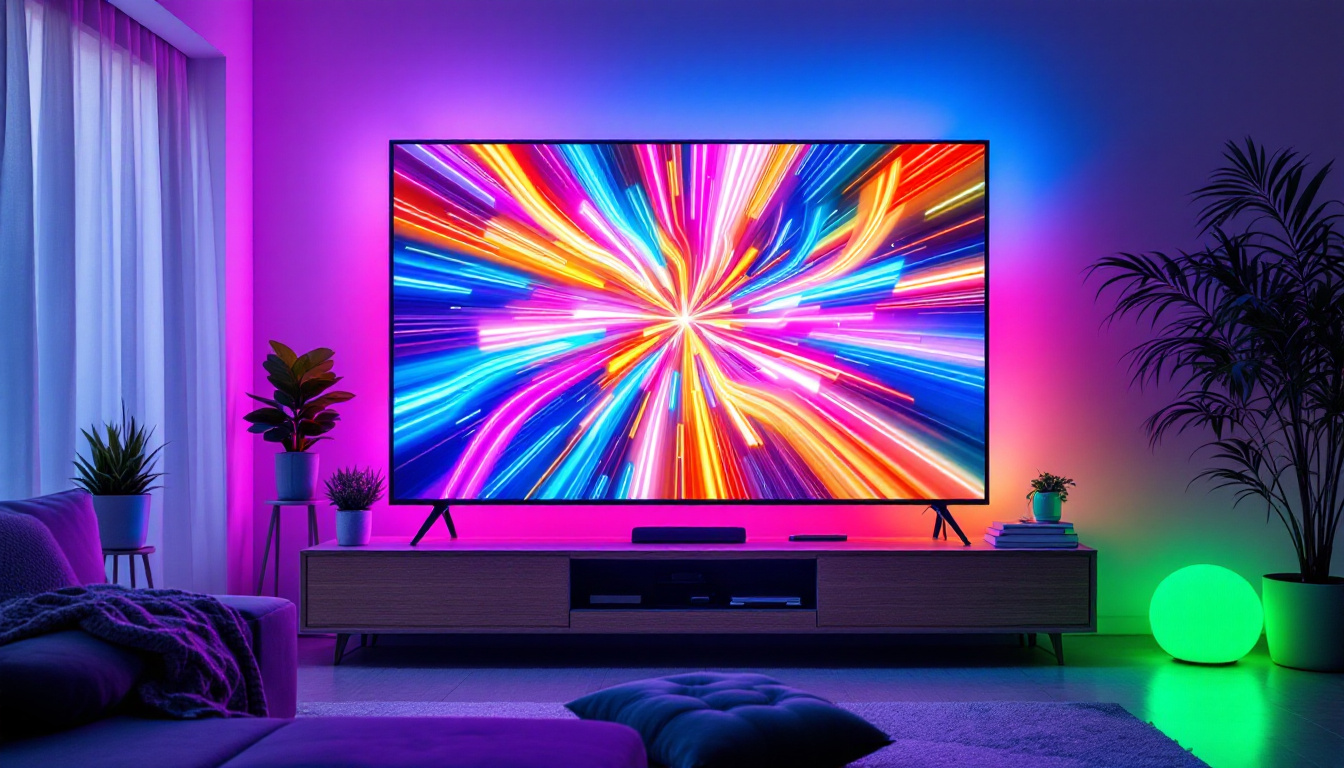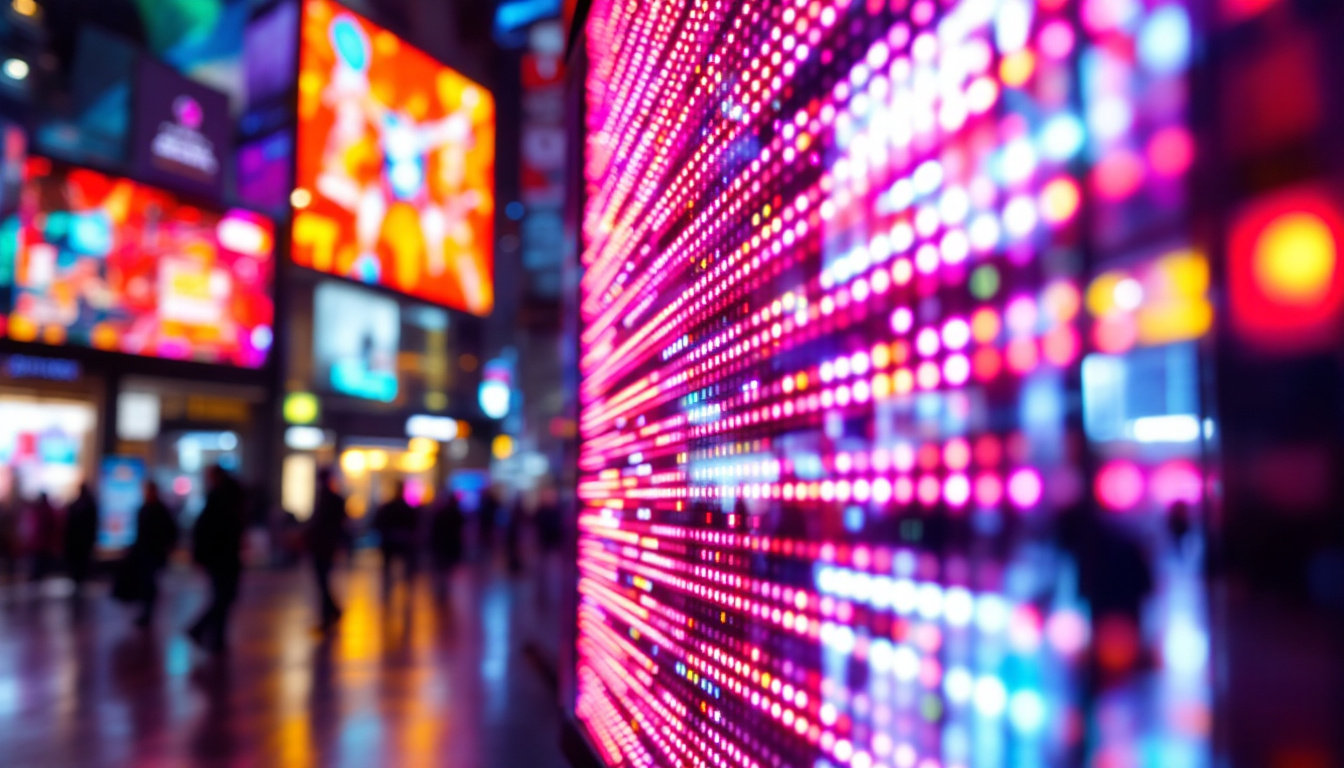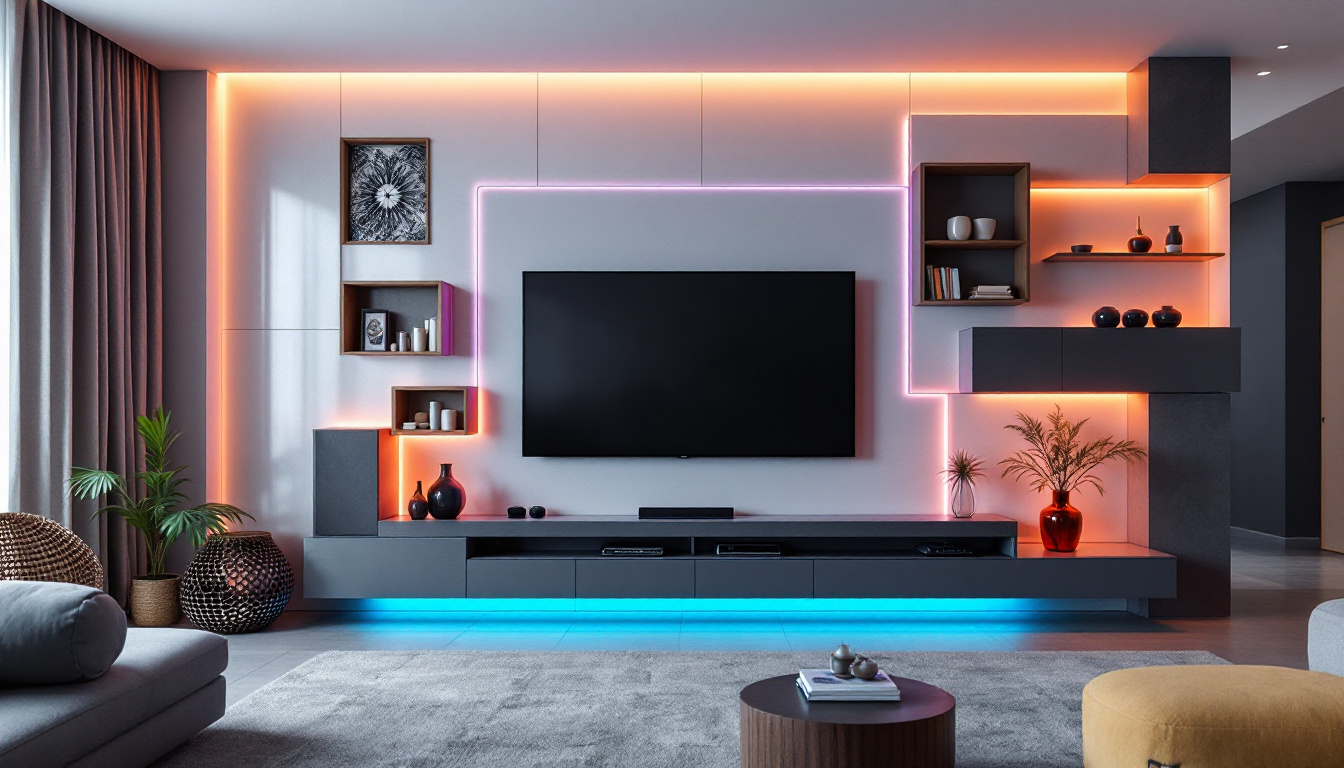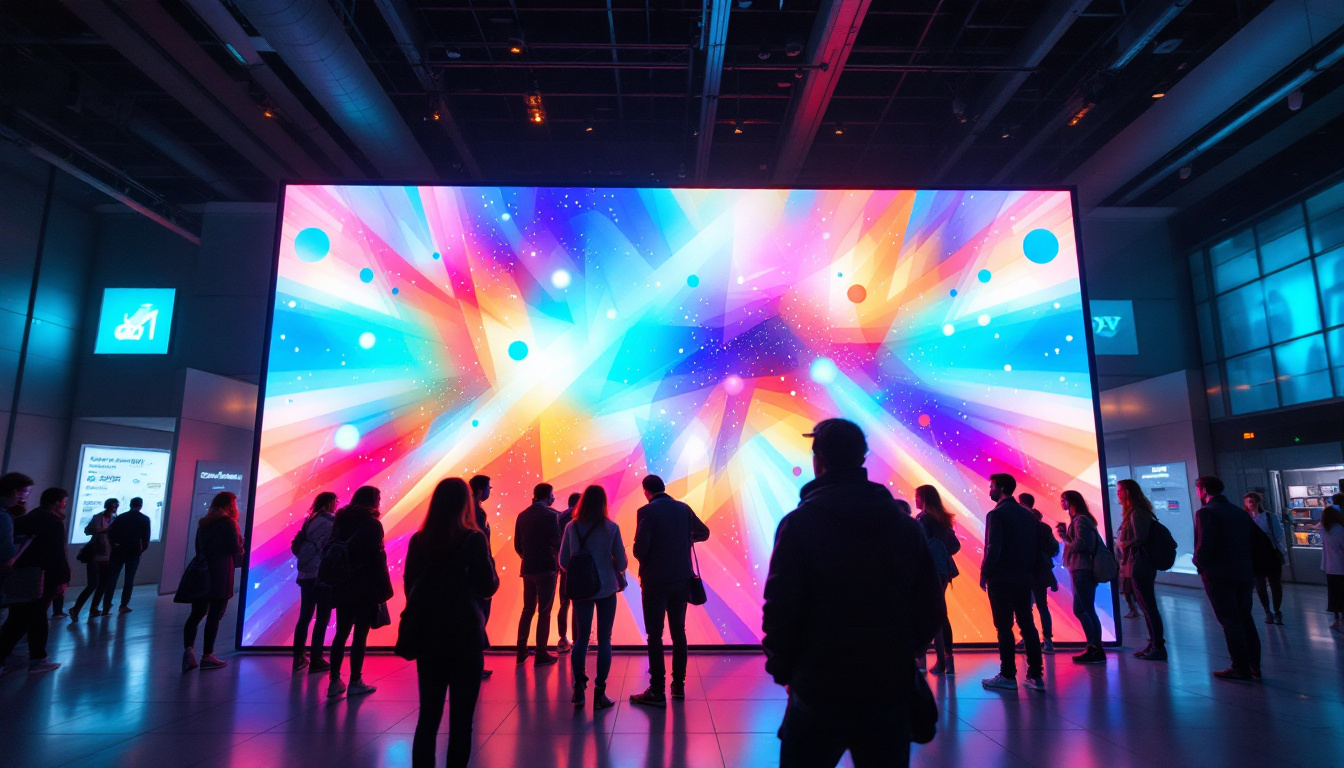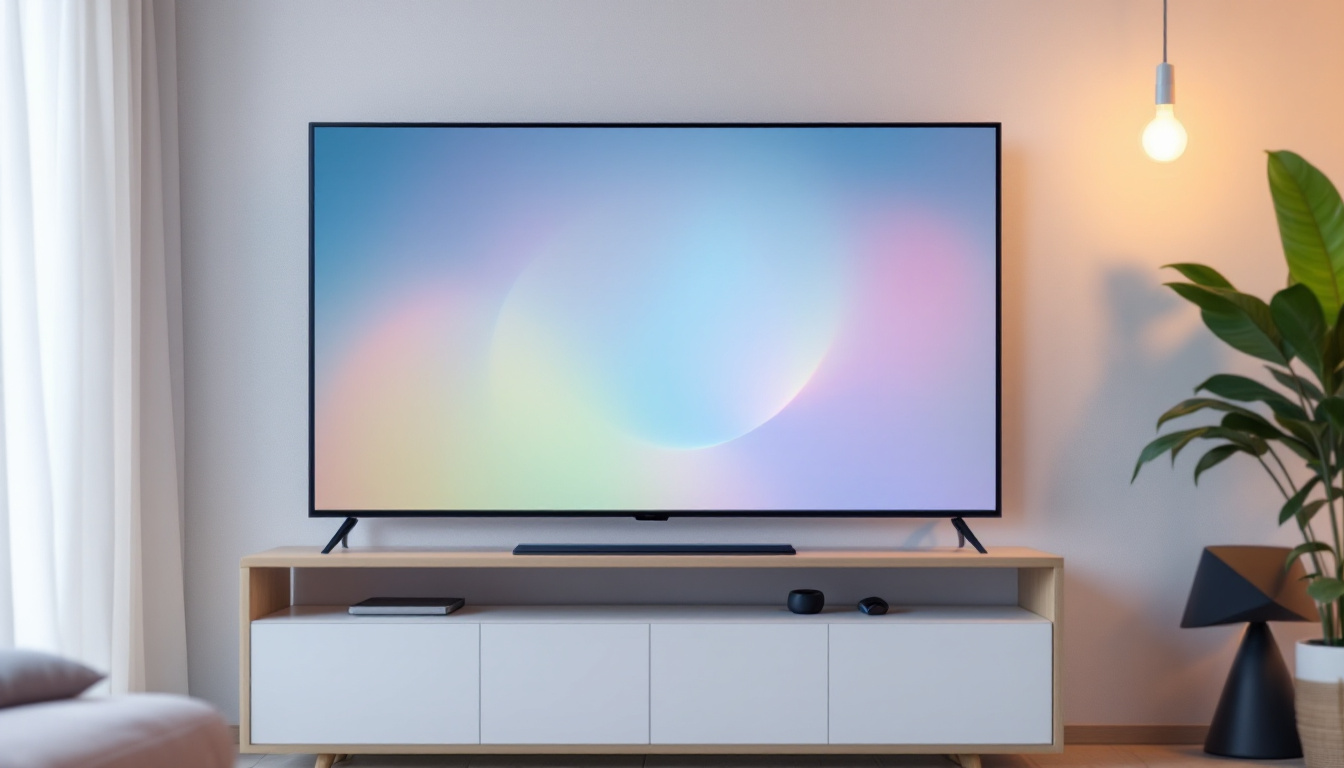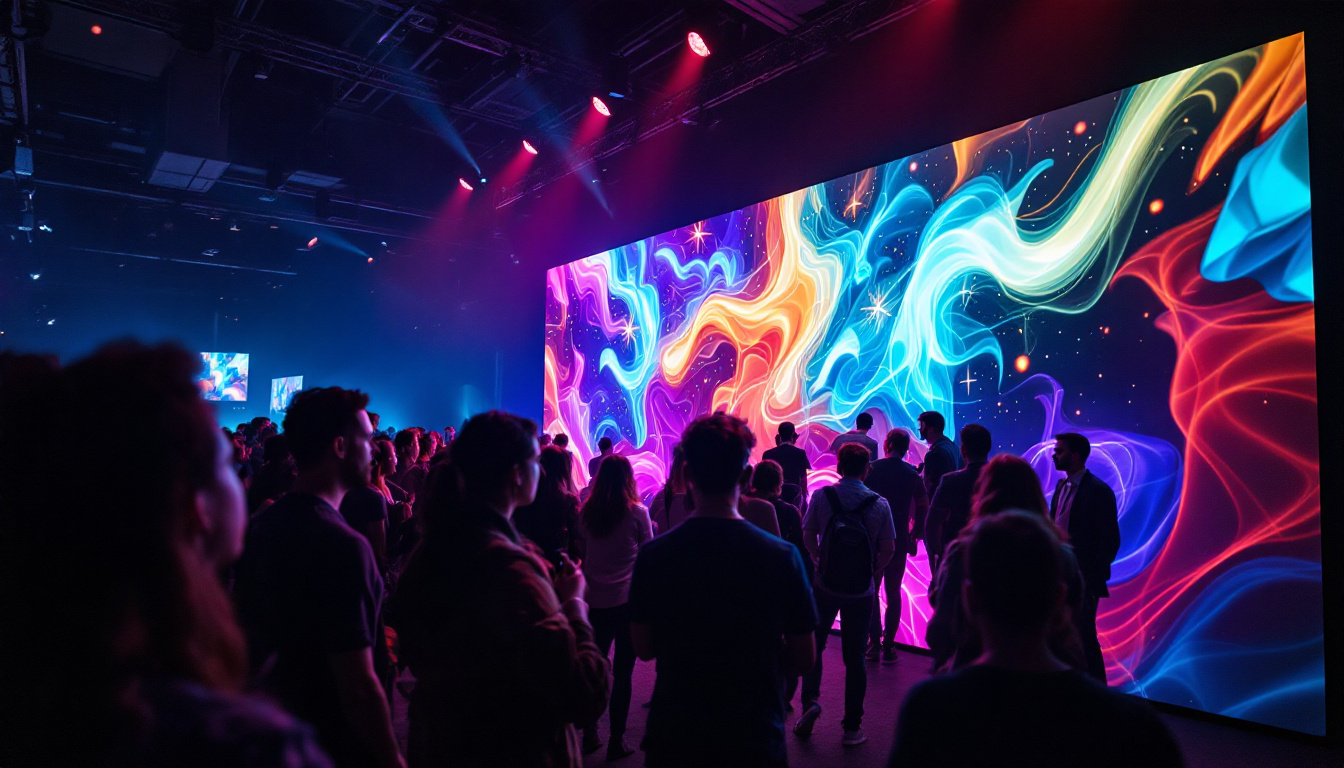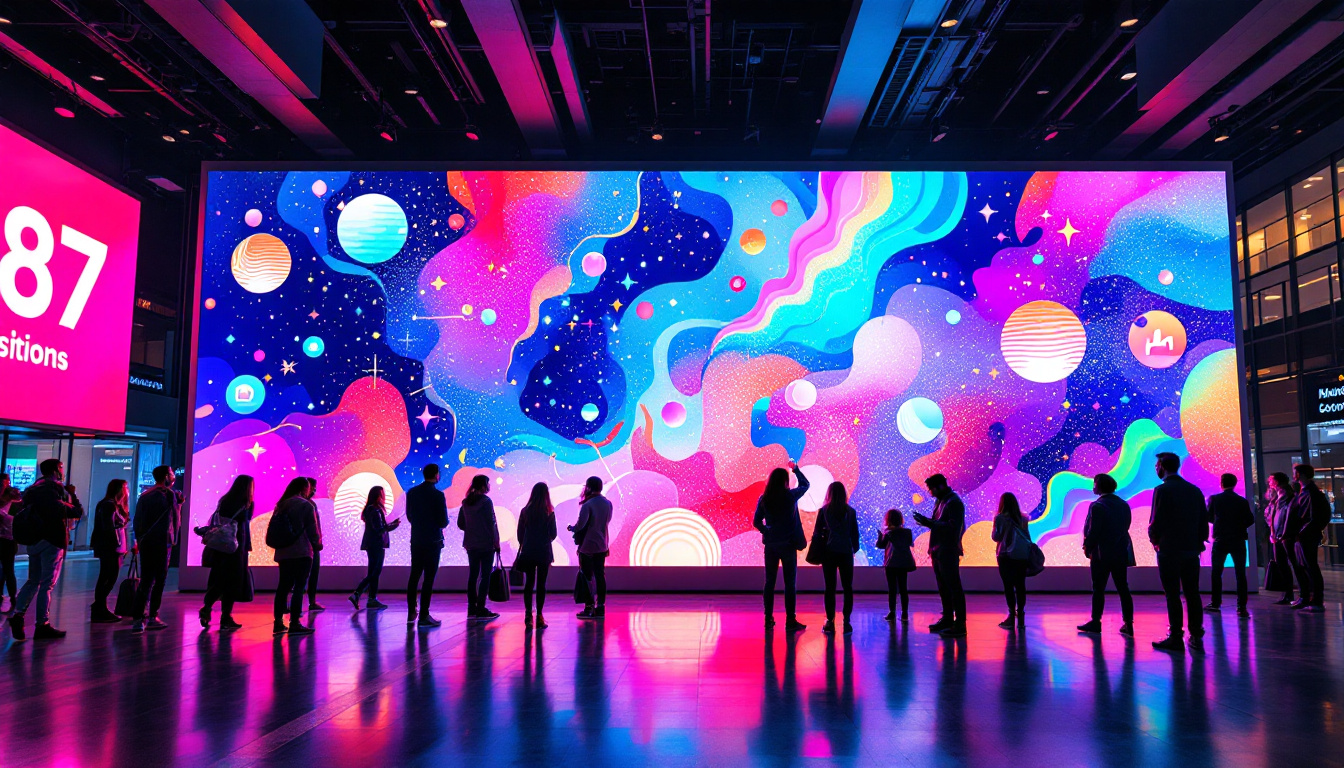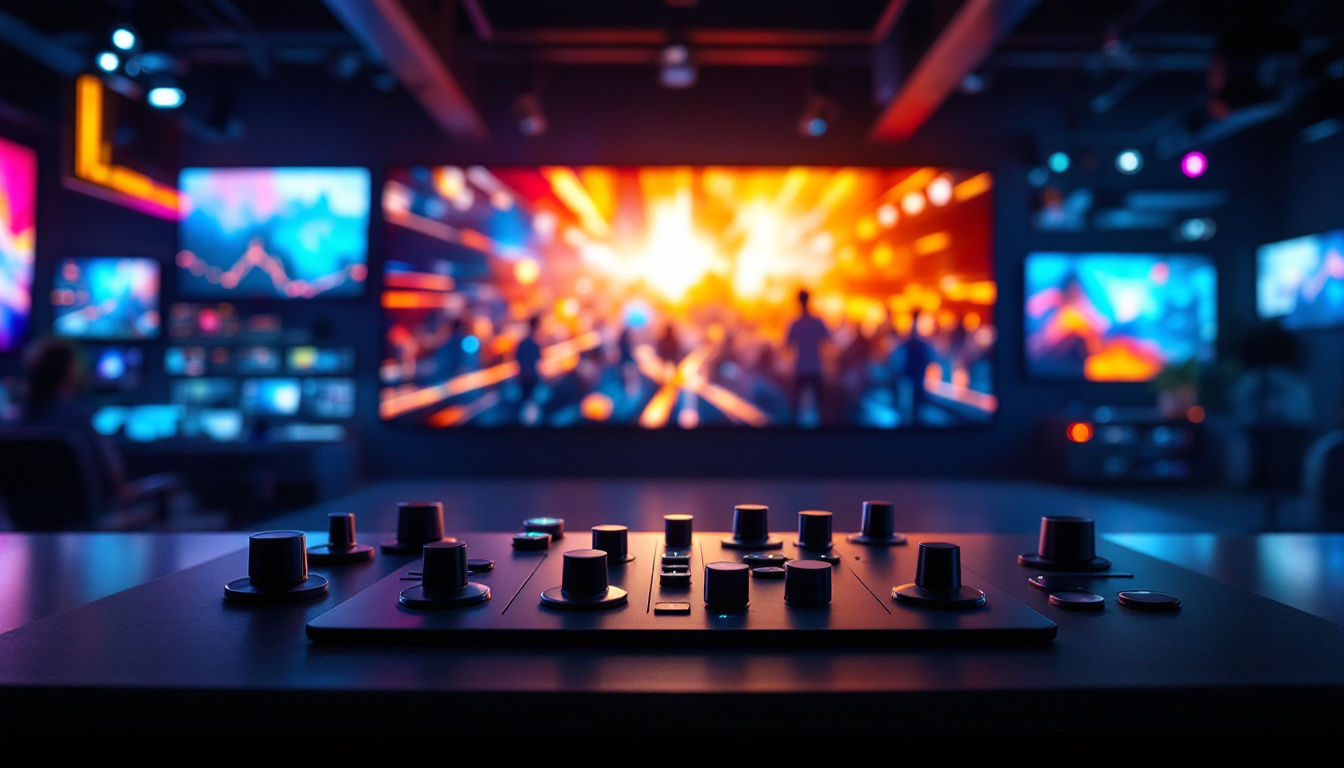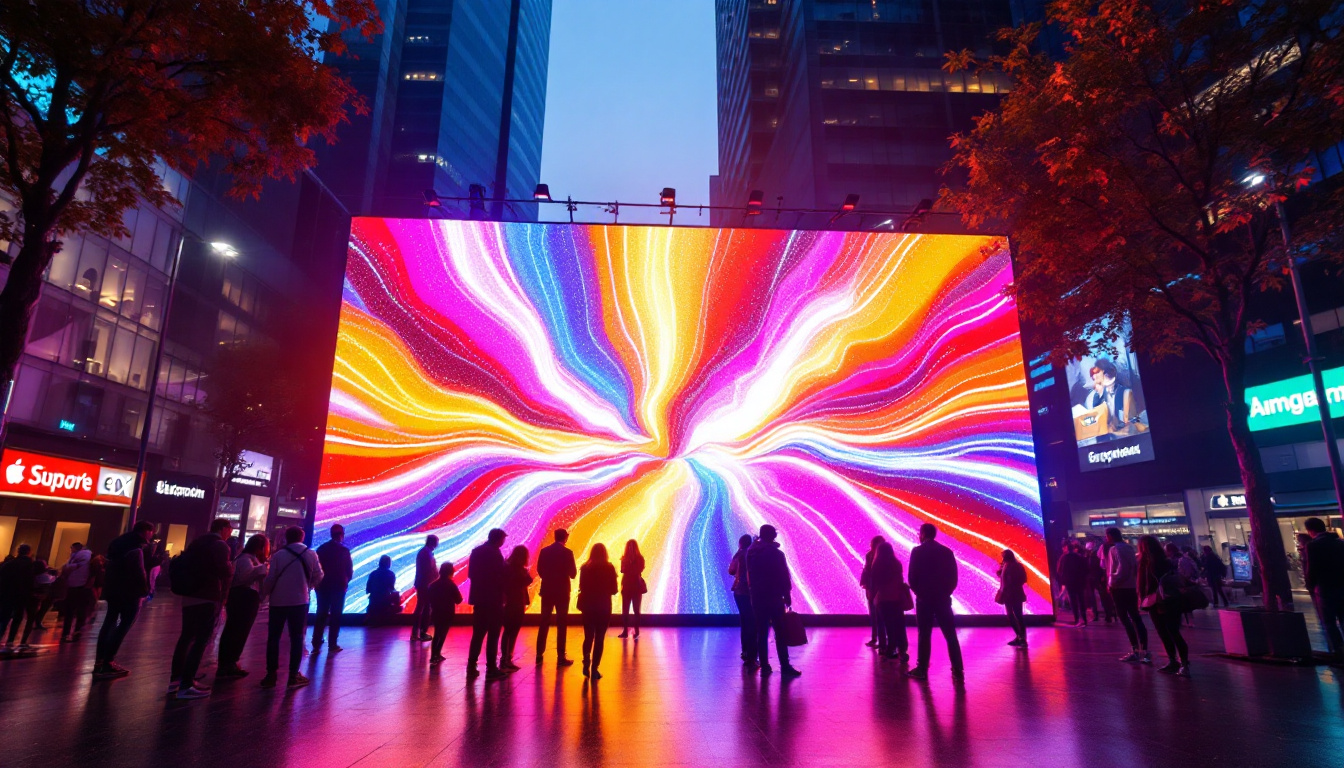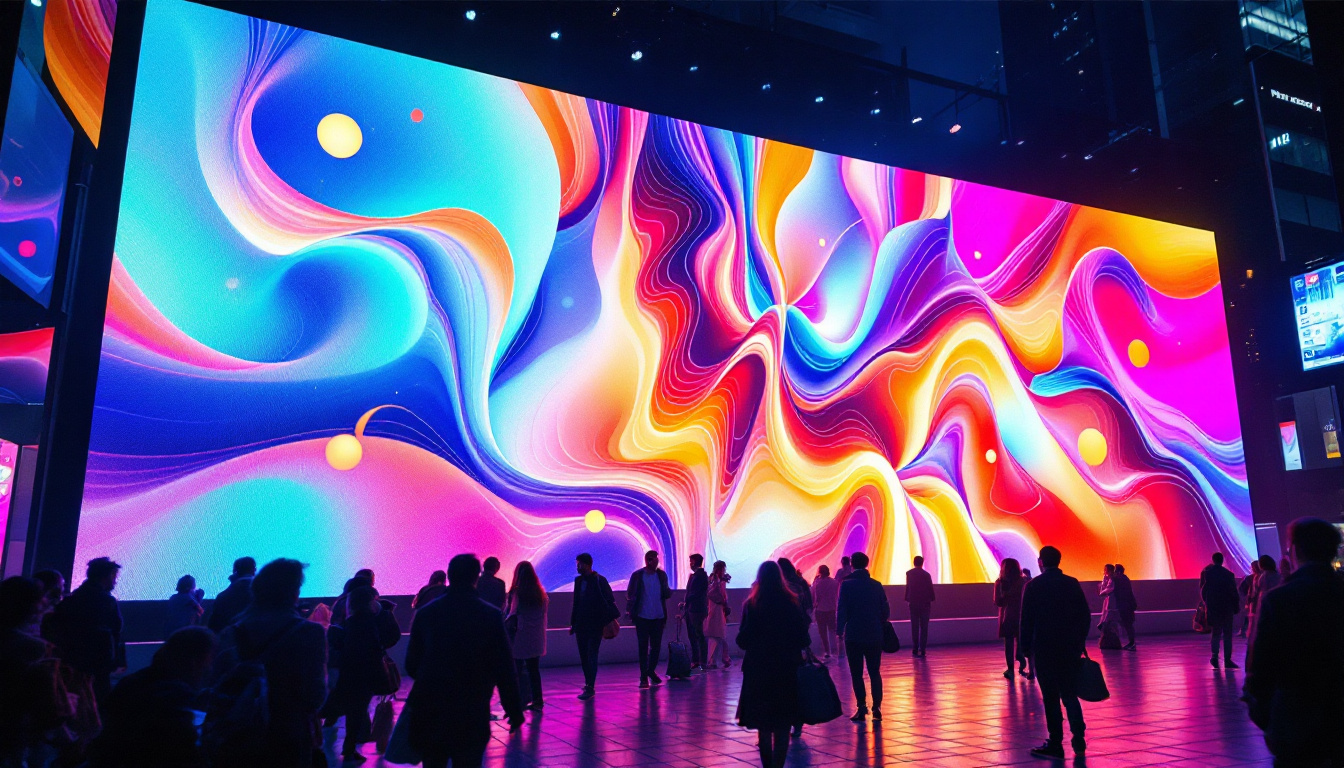In recent years, LED wall screens have revolutionized the way we experience visual content, from advertising to entertainment. These vibrant displays have become a staple in various industries, providing dynamic and eye-catching visuals that capture attention. This article delves into the intricacies of LED wall screens, exploring their technology, applications, and advantages.
Understanding LED Technology
LED, or Light Emitting Diode, technology has transformed the landscape of display screens. Unlike traditional display technologies, LED screens utilize small diodes that emit light when an electric current passes through them. This fundamental difference contributes to the unique characteristics of LED displays, such as their energy efficiency, longevity, and brightness, which make them an ideal choice for both indoor and outdoor applications.
How LED Displays Work
At the core of an LED wall screen are thousands of tiny LED bulbs, which can be arranged in various configurations to create a larger display. These bulbs can emit different colors by mixing red, green, and blue light. By adjusting the intensity of each color, the screen can produce a wide spectrum of colors, allowing for vibrant and dynamic images. This color mixing capability is not only essential for creating lifelike visuals but also for enhancing the viewer’s experience, making LED displays a popular choice for advertising and entertainment.
The arrangement of these LEDs can vary significantly. Some displays use individual bulbs, while others employ a matrix of LEDs grouped together. This flexibility in design enables manufacturers to create screens of various sizes and resolutions, catering to different applications and environments. For instance, outdoor LED displays are often designed to withstand harsh weather conditions, featuring protective coatings and robust structures, while indoor displays prioritize aesthetics and viewing angles to enhance the ambiance of a space.
Types of LED Displays
LED displays can be categorized into several types based on their construction and intended use. The most common types include:
- Direct View LED: These displays are made up of individual LED modules that are directly visible to the audience. They are often used for large outdoor screens and billboards, providing bright and clear visuals even in direct sunlight.
- LED Video Walls: Comprising multiple LED panels, video walls can create a seamless large display. They are widely used in events, concerts, and control rooms, allowing for immersive experiences and real-time information sharing.
- Fine Pixel Pitch LED: With a smaller distance between pixels, these displays offer higher resolution and clarity, making them suitable for indoor environments like conference rooms and retail spaces. The fine pixel pitch allows for close viewing without pixelation, ensuring that every detail is crisp and clear.
In addition to these common types, there are also specialized LED displays designed for unique applications. For example, transparent LED displays are gaining popularity in retail environments, allowing customers to see products behind the screen while still displaying vibrant advertisements. Similarly, flexible LED screens are being developed for innovative applications, such as curved displays that can fit into unconventional spaces, further expanding the versatility of LED technology. As the technology continues to evolve, we can expect even more exciting advancements that will enhance how we interact with visual media.
Applications of LED Wall Screens
LED wall screens have found their way into numerous sectors, each leveraging the technology to enhance visual communication. Their versatility makes them suitable for a variety of applications.
Advertising and Marketing
One of the most prevalent uses of LED wall screens is in advertising. Businesses utilize these displays to showcase advertisements, promotions, and brand messages in a visually striking manner. The ability to change content quickly allows for dynamic marketing strategies, making it easier to adapt to trends and audience preferences.
Outdoor LED billboards, for instance, can attract passersby with vibrant colors and animations, significantly increasing engagement compared to static displays. Furthermore, the high brightness levels of LED screens ensure visibility even in direct sunlight, making them ideal for outdoor advertising. This capability is particularly beneficial for urban areas where competition for attention is fierce, as brands can utilize eye-catching visuals to stand out in crowded environments. Additionally, the use of LED technology can lead to reduced energy costs over time, as many modern screens are designed to be energy-efficient, allowing for a more sustainable approach to advertising.
Entertainment and Events
In the entertainment industry, LED wall screens play a crucial role in enhancing the audience experience. Concerts, festivals, and sporting events often feature large LED displays that provide real-time visuals, live feeds, and stunning graphics. These screens create an immersive environment, drawing the audience into the performance.
Additionally, event organizers can use LED walls to display information such as schedules, directions, and sponsor logos, ensuring that attendees are well-informed throughout the event. The versatility of LED screens allows for creative storytelling, where visuals can sync with music or live performances, enhancing emotional engagement. For instance, during a concert, artists can use LED backdrops that change with the rhythm of the music, creating a cohesive experience that captivates the audience. Moreover, the ability to integrate social media feeds into these displays allows fans to see their posts in real-time, fostering a sense of community and interaction during events.
Corporate and Educational Settings
In corporate environments, LED wall screens are increasingly used for presentations, video conferencing, and collaborative work. Their high-resolution capabilities ensure that even the smallest details are visible, making them ideal for detailed presentations.
In educational settings, these displays can enhance learning experiences by showcasing interactive content, videos, and live demonstrations. The engaging nature of LED screens can help maintain student interest and facilitate better understanding of complex topics. Furthermore, educators can utilize these screens for remote learning, allowing for seamless integration of online resources and interactive lessons that can adapt to various learning styles. By incorporating gamified elements or real-time quizzes displayed on LED screens, teachers can create a more dynamic classroom environment that encourages participation and collaboration among students, ultimately leading to improved educational outcomes.
Advantages of LED Wall Screens
The benefits of LED wall screens extend beyond their aesthetic appeal. They offer several advantages that contribute to their growing popularity across various sectors.
Energy Efficiency
One of the standout features of LED technology is its energy efficiency. Compared to traditional display technologies, LED screens consume significantly less power while providing brighter and more vibrant visuals. This not only reduces operational costs but also contributes to a lower carbon footprint, making LED displays an environmentally friendly option.
Longevity and Durability
LED wall screens are known for their longevity and durability. With a lifespan that can exceed 100,000 hours, these displays require less frequent replacements compared to other technologies. Additionally, they are resistant to shock and vibration, making them suitable for various environments, including outdoor settings where weather conditions can be unpredictable.
High Brightness and Contrast
LED displays are capable of achieving high brightness levels, ensuring that content remains visible even in bright environments. This is particularly important for outdoor applications where sunlight can wash out images on traditional screens. Furthermore, the contrast ratio of LED displays allows for deeper blacks and more vivid colors, enhancing the overall viewing experience.
Challenges and Considerations
While LED wall screens offer numerous advantages, they also come with challenges that need to be addressed. Understanding these challenges is essential for making informed decisions when investing in LED technology.
Initial Cost
The initial investment for LED wall screens can be substantial. High-quality displays, especially those with fine pixel pitch, can come with a hefty price tag. However, it is crucial to consider the long-term benefits, such as reduced maintenance costs and energy savings, which can offset the initial expenditure over time.
Installation and Maintenance
Installing LED wall screens requires careful planning and expertise. Proper installation is essential to ensure optimal performance and longevity. Additionally, while LED displays are durable, they may still require maintenance to address any issues that arise over time, such as pixel failures or calibration needs. Engaging with experienced professionals for installation and maintenance can mitigate these challenges.
The Future of LED Wall Screens
The future of LED wall screens looks promising, with continuous advancements in technology paving the way for even more innovative applications. As the demand for high-quality visual content grows, manufacturers are focusing on enhancing resolution, reducing costs, and improving energy efficiency.
Emerging Trends
Several trends are shaping the future of LED wall screens:
- MicroLED Technology: This emerging technology promises to deliver even higher resolution and better color accuracy, offering a more immersive viewing experience.
- Flexible Displays: The development of flexible LED screens allows for creative installations, enabling displays to take on various shapes and sizes to fit unique environments.
- Integration with IoT: As the Internet of Things (IoT) continues to expand, LED wall screens are being integrated with smart technology, allowing for real-time data display and enhanced interactivity.
Conclusion
LED wall screens have transformed the way visual content is presented across various industries. Their vibrant colors, energy efficiency, and versatility make them an attractive option for advertising, entertainment, and corporate applications. While challenges such as initial costs and installation complexities exist, the long-term benefits and continuous advancements in technology make LED displays a worthwhile investment.
As the industry evolves, staying informed about emerging trends and innovations will be crucial for businesses looking to leverage LED wall screens effectively. Embracing this technology can lead to enhanced engagement, improved communication, and a more impactful visual presence in an increasingly competitive landscape.
Discover LumenMatrix LED Display Solutions
Ready to elevate your visual presentations and captivate your audience like never before? Explore LumenMatrix’s comprehensive range of LED display solutions, where innovation meets excellence. From vibrant Indoor and Outdoor LED Wall Displays to versatile Vehicle and Sports LED Displays, each product is designed to make your brand shine. Experience the future of visual communication with our LED Poster Displays, Floor LED Displays, Custom LED Displays, All-in-One LED Displays, and LED Transparent Displays. Visit LumenMatrix LED Display Solutions today and see how our cutting-edge technology can transform your message into an unforgettable visual experience.

